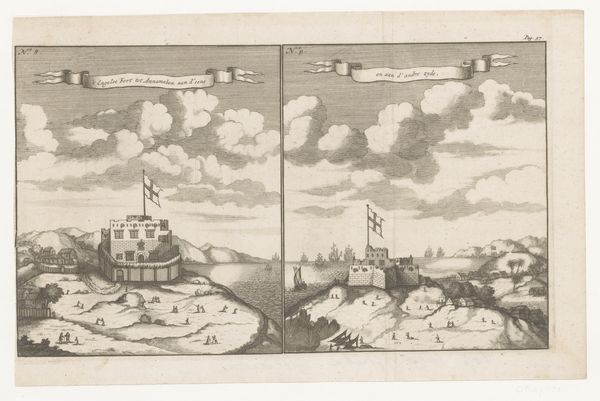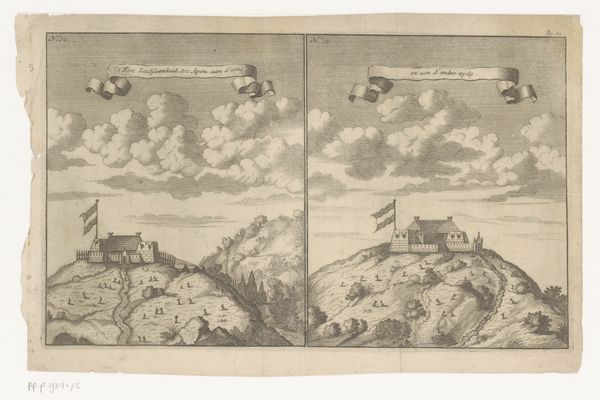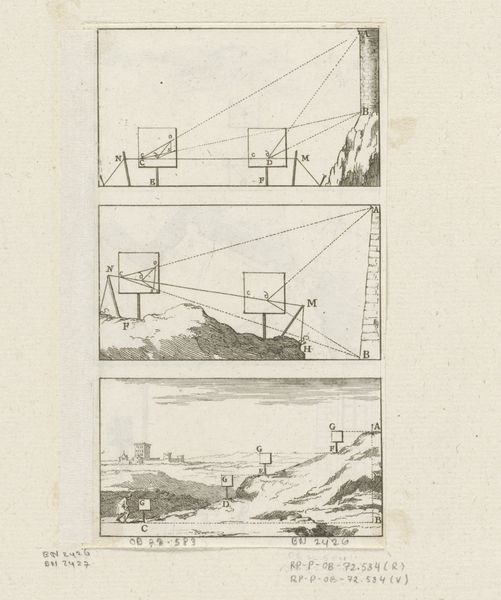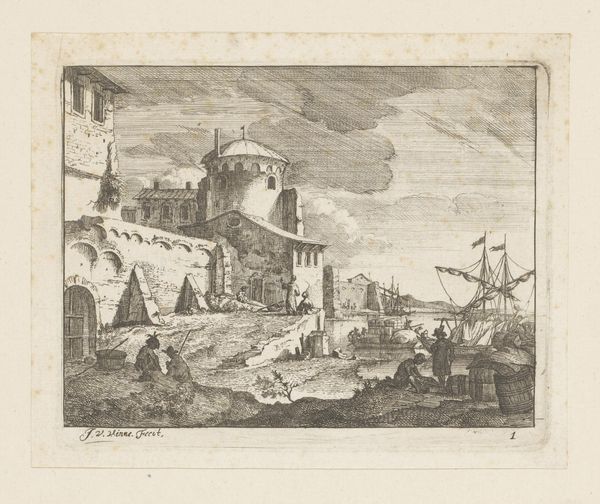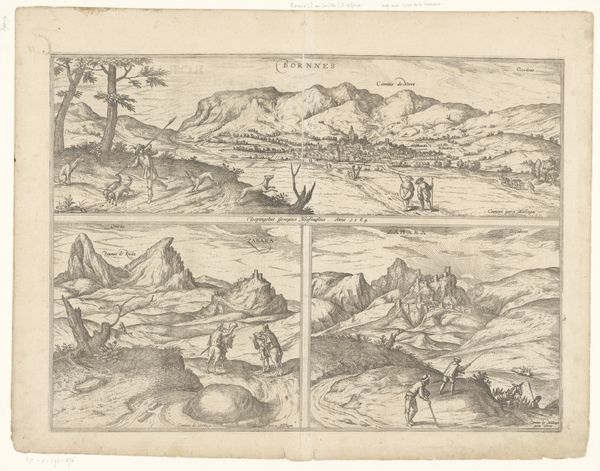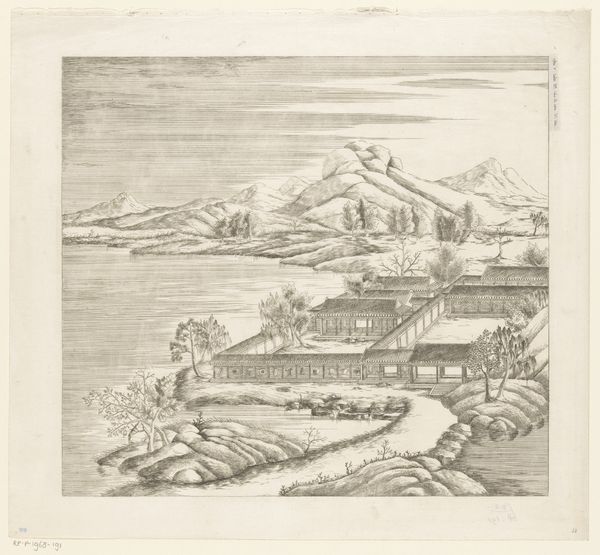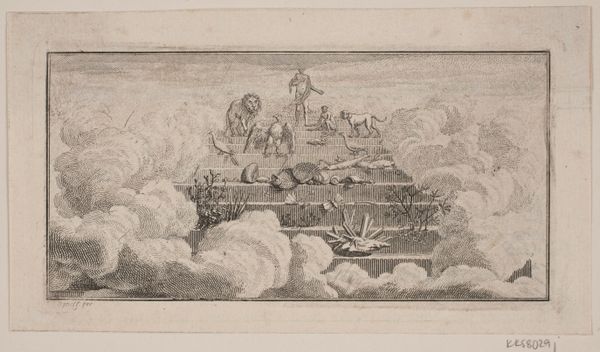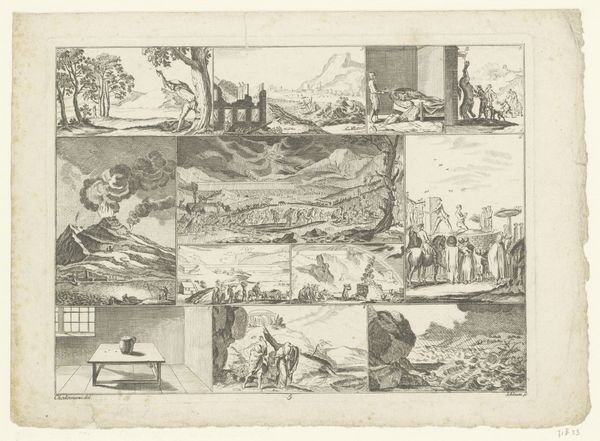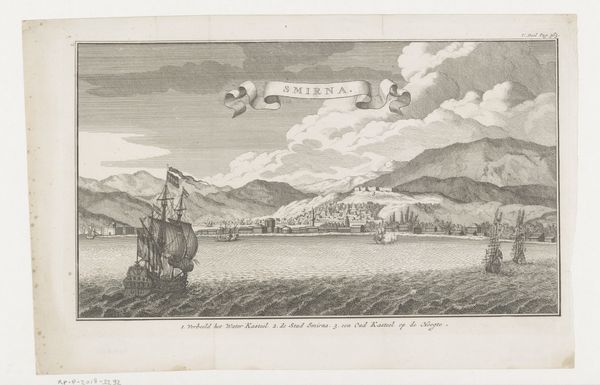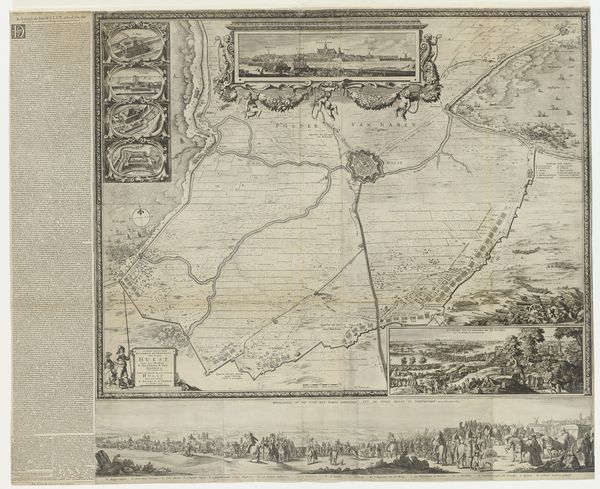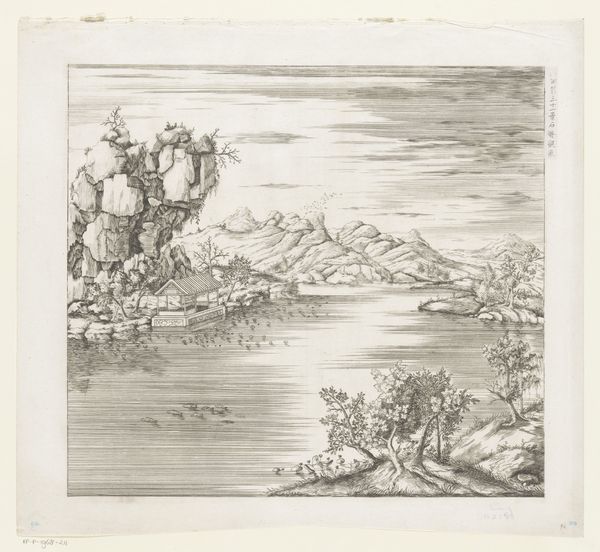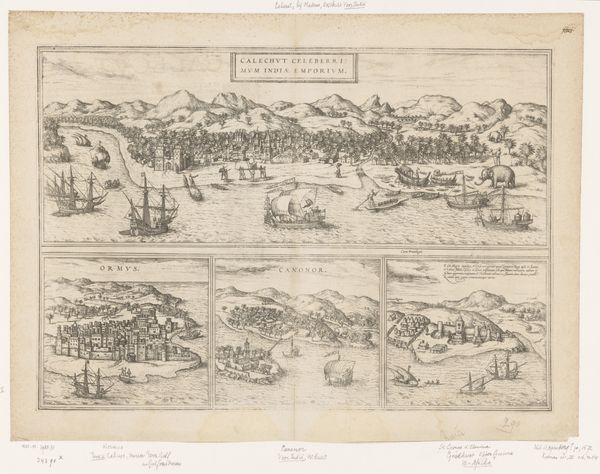
print, engraving
#
baroque
# print
#
landscape
#
cityscape
#
engraving
Dimensions: height 198 mm, width 311 mm
Copyright: Rijks Museum: Open Domain
Curator: Here we have an engraving from 1709 titled "Twee gezichten op Fort James te Accra in Ghana," or "Two Views of Fort James in Accra, Ghana," by an anonymous artist. It resides in the Rijksmuseum. Editor: The scene has an oddly serene quality, despite its subject. The neatly arranged figures, the crisp architectural lines, even the billowing clouds lend it a rather static feeling. And yet...there’s a disquiet lingering underneath. Curator: The image presents two perspectives of Fort James, both under the Dutch flag, although the fort was originally established by the English. What visual symbolism do you see at play? What story can we weave through it? Editor: We see figures populating the landscape—are these soldiers? Captives? They seem small, inconsequential compared to the fort. The presence of the Dutch flag, even without knowing the specifics, points toward themes of colonial power, control, and the subjugation of people. This is a landscape soaked in history, a silent testament to human suffering. Curator: Absolutely, these symbols speak of power. The Fort itself represents dominion, of course, and even in its depiction in both images there is a symbolic contrast that the engraver makes so clear. And consider the perspective! Each viewpoint suggests an angle of control and ownership. I believe the serenity is more akin to forced submission rather than peace. Editor: I wonder about the choice to render this scene as two nearly identical landscapes. What effect is produced by repeating an image? And each image also includes what appears to be a separate title written on fluttering ribbon banners in early modern Dutch! Curator: Well, recall that maps and topographical images in the early 18th century functioned as tools of power and persuasion. Duplicating and contrasting fortresses—through the banner texts—could also subtly underline the might of European empires, the expansionist spirit. In its time, images like these were not passive reflections; they actively contributed to constructing a particular narrative about colonisation. The duplication allows for the reading of the symbolic inscriptions overhead each fortress view. Editor: I agree completely, particularly in this case; such historical records give shape to how we perceive cultural dominance, and our responsibilities to decolonize that memory by engaging actively with its inherent contradictions. Curator: An engaging discussion indeed. The image’s composition offers a seemingly tranquil surface that actually shrouds an undeniable demonstration of imperial ambition and lasting social inequity.
Comments
No comments
Be the first to comment and join the conversation on the ultimate creative platform.
